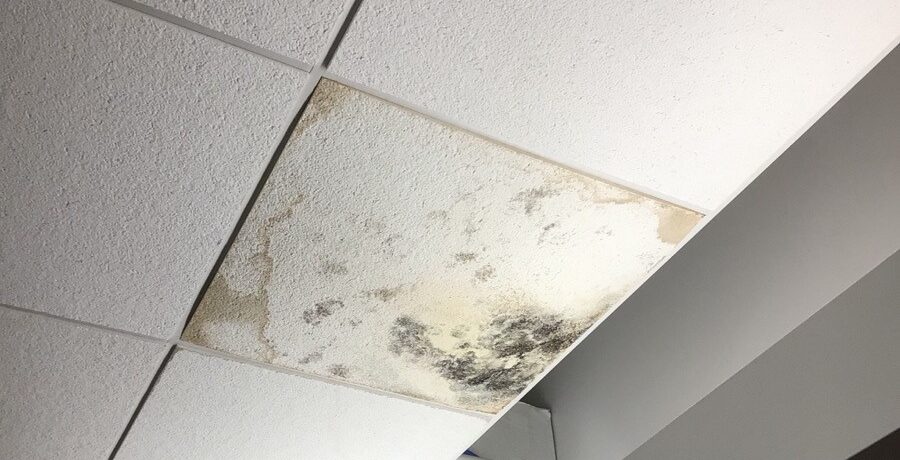Mold is everywhere. But don’t panic.
We’ve all seen it. Maybe in the kitchen on day-old bread or on some languishing lemons. Maybe in a dark closet or the AC vent. No matter, most of us see mold and think “yuck!” When on food it’s one issue, but finding mold in homes, offices, and other indoors spaces can be concerning. But, most fuzzy discoveries shouldn’t cause to much distress. Let’s check out some fungal facts.
What are molds, mildews, and fungi? Is there a difference?
Well, not much. Mildew is a generic name for mold or fungal growth. Fungi are the principle decomposers in our world, ensuring biological materials are broken down, recycled, and available to be used again. Most of us think of mushrooms when we hear the word fungi. And while there’s nothing wrong with this picture, it’s just not the whole picture. Mushrooms are the ‘fruit’ of fungi, the rest of the fungus is usually out of sight(and out of mind!). The ‘body’ of a fungus is referred to as the mycelium, which has some resemblance to roots or webs. The mycelium is where the action happens. Nutrient absorption, water collection, defense against other microorganism are all functions of the mycelium and happen while hidden away in the soil or other growing medium.
What do molds and mildews look like? Molds often have fluffy, furry appearance, while mildews appear as a wispy and superficial covering. Molds have darker colors like black, blue, and green, whereas mildews are generally considered lighter/whiter colored. Just remember: there really isn’t a difference between mold and mildew!
“An ounce of prevention is worth a pound of cure”
The easiest way to deal with a mold and mildew problem is to avoid one in the first place. In order for fungi to grow, proliferate, and be problematic, a couple of things need to happen. First, there needs to be moisture. Everyone organism on earth has some need for water and fungi are no different. Water can be available to fungi in many forms, some may surprise you.
Excess moisture encourages mold and mildew growth. A indoor relative humidity above 50% can increase the chances of mold growth. Sources of indoor moisture include bathing, cooking, even you!
Stagnant, still air is mold’s best friend. Its recommended that indoor Air Changes per Hour(ACH) is greater than 0.35 or 15 cfm per person.
Temperatures above 70F encourage molds and mildews. Muggy summer months are when fungal outbreaks tend to happen. The combination of high humidity, elevated temperatures creates ideal environments indoors for mold to grow.
Second, fungi need a food source. Because they are excellent decomposers, fungi can utilize a wide variety of materials as food. Anything made of cellulose – paper, cardboard, fabrics – are especially at risk
Fungi Q&A
How do I prevent mold an mildew from getting into a home or office?
Short answer is you can’t. Fungal spores are the microscopic ‘seeds’ that grow into fuzzy stuff and they’re all around us, all the time. You can find them on just about every surface, even you. While you can’t prevent spores getting inside, you can prevent it from growing by eliminating conditions that help it grow. The key to mold control is moisture control.
I found mold. Should I have it tested?
In most cases, if visible mold growth is present, sampling is unnecessary. Since no EPA or other federal limits have been set for mold or mold spores, sampling isn’t useful for determining a building’s compliance with federal mold standards. Surface sampling may be useful if testing the effectiveness of a mold remediation project.
I found mold. Is it dangerous?
Molds have the potential to cause health problems. Molds can produce allergens, irritants, and in some cases, potentially toxic substances. Inhaling or touching mold or mold spores could cause allergic reactions in sensitive individuals. Other allergic responses include hay fever-type symptoms, such as sneezing, runny nose, red eyes, and skin rash. Allergic reactions to mold are common, but reactions could be severe. If you believe you’ve been exposed contact a health care provider.
How do I clean up mold?
That depends on how large the affected area is. If the moldy area is less than about 10 square feet (less than roughly a 3 ft. by 3 ft. patch), you can probably handle the job yourself. Any larger and its a good idea to enlist professional help. For small cleanups, wear appropriate PPE and do not clean the area if dry. Attempting to clean dried mold can release spores – which put you at risk. Use a detergent or other nonbiocidal cleaning agent. Using a biocide such as bleach won’t kill the spores, which means it won’t prevent future outbreaks. All used cleaning materials should be properly disposed of.
Have questions about mold? Looking for advice on how prevent mold outbreaks? Contact the Safety & Sustainability team!
EHS Director: Ronnie Souza | rsouza@une.edu | 207-602-2488
Associate Director of Sustainability: Alethea Cariddi | acariddi@une.edu | 207-602-2507
EHS Specialist: Peter Nagle | pnagle@une.edu | 207-602-2791
EHS Specialist: Davis Martinec | dmartinec@une.edu | 207-602-2046

